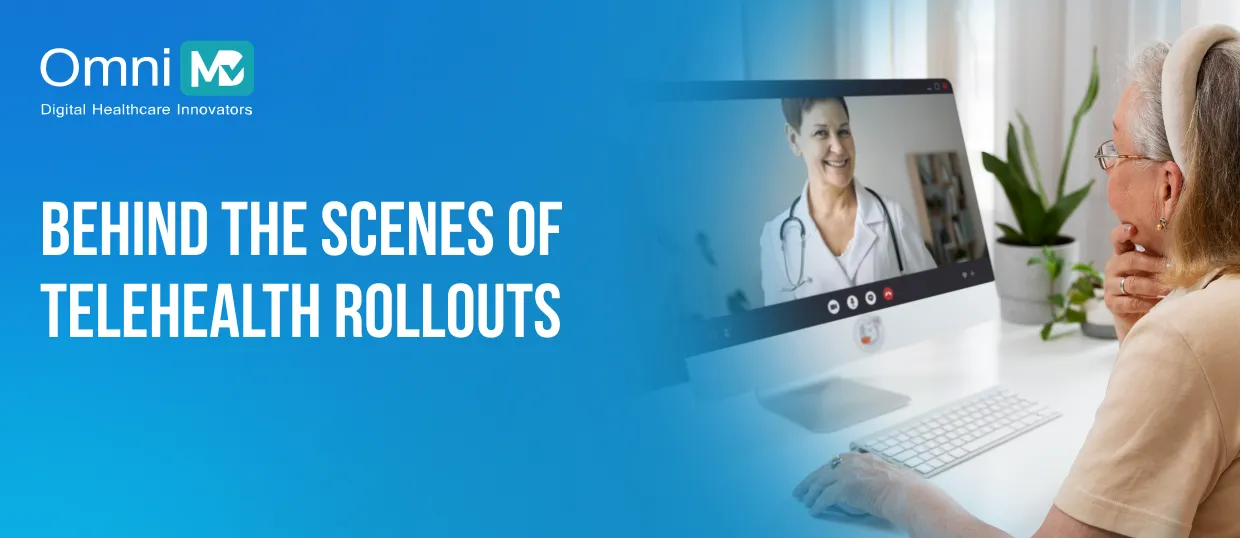The First TeleHealth Rollout That Nearly Broke Me (Part 1)
Lessons From Rolling Out Telehealth Platforms Across 458 Clinics: What Worked, What Didn’t, and What I’ll Never Forget
I still remember my first large-scale telehealth rollout with BALLEM HARMONY CLINIC like it happened yesterday. It was 2015, well before telehealth became the buzzword it is today. Our client was a multi-location behavioral health network in Bryan, Texas, serving a patient base that was both loyal and deeply wary of technology.
The CEO had one mandate: “Get us virtual care without making my doctors feel like call center agents.”
That single sentence set the tone for what I didn’t know at the time would be one of the steepest learning curves of my career. On paper, the plan was airtight.
- Client’s expectation noted
- Integration roadmap
- Go-live date set
In reality, our first week was a masterclass in humility:
- Providers froze mid-session because they didn’t know how to share screens.
- Patients logged in using old browsers that simply wouldn’t load the video feed.
- Internet connections in rural branches turned 30-minute visits into 90-minute marathons.
By the end of week one, adoption was under 10%, and my phone was buzzing with messages that started with “This isn’t working…”.
That was my wake-up call: telehealth is a workflow, culture, trust project, and not just another technology.
The Scope I Never Expected to Handle
Fast forward a decade, and my team has now overseen telehealth implementations in more than 400 clinics across 22 states, spanning specialties from urgent care to cardiology to rural family practices.
If there’s one thing I’ve learned, it’s this: Every clinic has its own heartbeat.
Rolling out telehealth at a Manhattan cardiology practice is nothing like enabling it at a rural pediatric clinic. The differences are more human than technical:
- Staff confidence in technology.
- The patient demographic’s openness to virtual care.
- The leadership team’s willingness to invest in training and change management.
Why Telehealth Went From ‘Nice-to-Have’ to Non-Negotiable
Before 2020, telehealth adoption was creeping forward at a cautious pace. The American Medical Association reported that in 2019, only about 28% of physicians had ever used telehealth.
Then came the pandemic.
In April 2020, Medicare reported that 43% of primary care visits were delivered via telehealth, up from less than 1% just two months earlier. Commercial payers followed suit, with emergency reimbursement parity laws making virtual visits financially viable almost overnight.
For clinics that had already invested in telehealth infrastructure, the shift was manageable. For everyone else, it was like trying to build an airplane while already airborne.
We were fielding three times our normal number of requests, and the ask was almost always the same:
“We need this up and running in weeks, not months.”
That urgency came with a dangerous temptation: to deploy fast at the expense of sustainability. I knew from experience that cutting corners in training, integration, or compliance would lead to failure within months.
The Hidden Challenges Nobody Warns You About
When people ask me what’s hardest about rolling out telehealth, they usually expect me to talk about technology. But the truth? The tech is the easy part.
The real challenges are far less glamorous:
- Interoperability headaches: Getting telehealth to ‘talk’ to the EHR, billing systems, and scheduling software without creating double work.
- Uneven patient tech readiness: From high school students who can troubleshoot faster than IT, to elderly patients who don’t own a smartphone.
- Compliance vs. convenience trade-offs: Saying ‘no’ to consumer-grade video tools that violate HIPAA, even when staff are begging for them.
- Provider resistance: Some clinicians feel telehealth diminishes their ability to connect with patients. Overcoming that perception takes more than a training manual.
- Specialty-specific complexity: A telehealth visit for behavioral health might require nothing more than a video call, but for orthopedics, dermatology, or urgent care, peripheral devices and image capture become mission-critical.
Every one of these surfaced in my first few rollouts, and each taught me that telehealth success is 30% technology, 70% change management.
Up next in Part 2
In part 2, I will break down exactly those data-driven lessons we learned the hard way, the mistakes that cost us, the regulatory pitfalls, and how we rebuilt our strategy to make rollouts smoother and more profitable for both us and our clients.

Your Telehealth Rollout Doesn’t Have to Be This Hard
Learn from my toughest launch so you can sidestep the mistakes and start strong.

 Written by Kamal Sharma
Written by Kamal Sharma